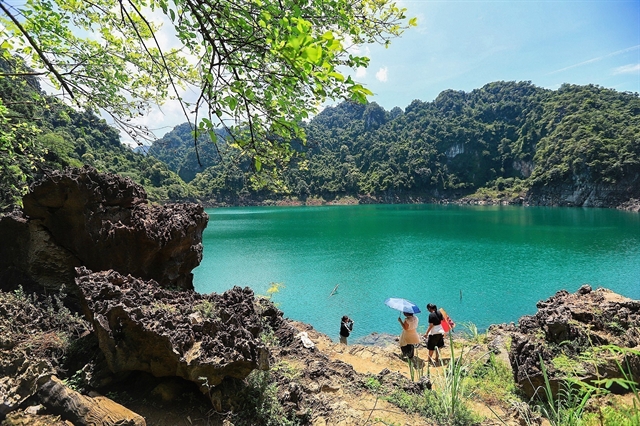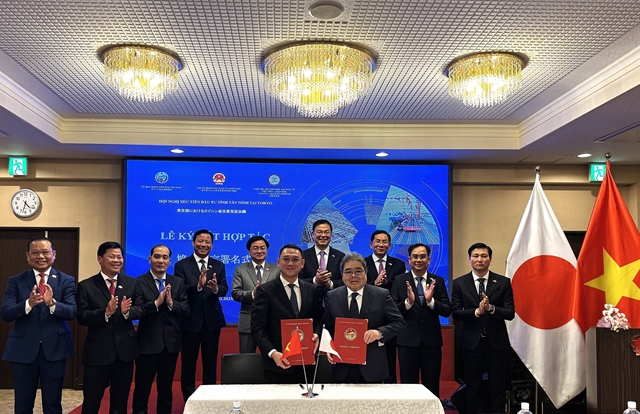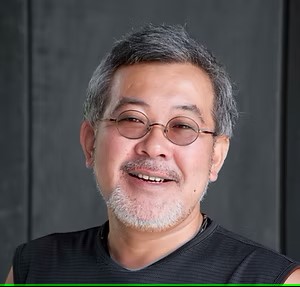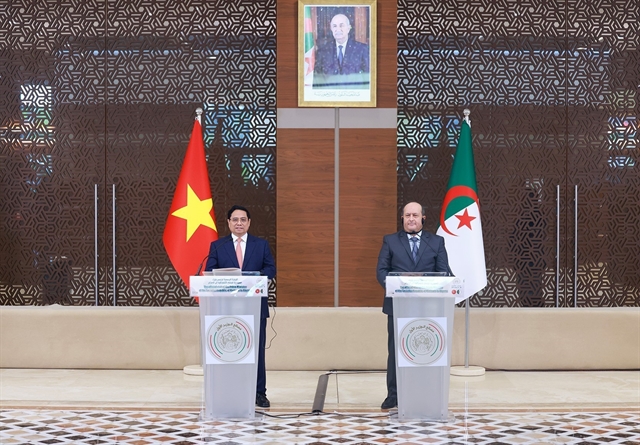 Life & Style
Life & Style

 |
| Artist Fuji Hiroshi. Photo Fuji Studio |
Japanese artist Fuji Hiroshi has held an exhibition at Japan Foundation Centre for Cultural Exchange in Hà Nội entitled Plastic Dinoland, showing colourful dinosaur and animal sculptures crafted from a vast collection of discarded toys collected in Japan.
Việt Nam News reporter Nguyễn Bình interviewed the artist about the exhibition and his campaigning artwork
Could you please tell us a little bit about your latest works?
Over the past 30 years, I have focused on household waste, attempting to create works that promote a chain of citizen-led activities using such waste.
Currently, however, I am expanding my scope to not only include household waste, but also other forms of waste - such as industrial waste - and exploring their circulation, disposal, archiving, preservation and use. My focus is on how we can pass these practices and ideas on to future generations.
How did you create the 'Plastic Age' exhibition, and where has it been shown before coming to Việt Nam? How have audiences responded to the exhibition?
I have since 1999 been working on systems that used plastic waste from households. In 2000, at the suggestion of my daughters, who were then kindergarten and first-grade students, I began a children's game system called 'Kaekko', which involves swapping unwanted toys.
Initially, I supported activities to distribute the 'Kaekko' system across Japan, providing children with spaces to play.
However, over time, broken toy fragments and toys of the same characters began accumulating in our studio, and I realised I needed to address the increasing volume of these pieces.
This led to the creation of the type of exhibition space we see this time in Hà Nội.
The exhibition was first presented in museums across Japan and it has since been shown in Australia and Thailand. The response from audiences has been similar across all countries. Children are especially happy because they can play with and exchange toys without using money.
Some adults, however, express social discomfort regarding the production and materials of the toys, and they are often overwhelmed by the volume of items, leading to deeper interpretations of the work's meaning.
Why did you and the foundation choose the name 'Plastic Dinoland' for this exhibition in Việt Nam? In your opinion, who is more likely to be drawn to this title -- adults or children?
The title Plastic Dinoland was chosen by the staff of the Japan Foundation in Việt Nam. For adults, the title subtly alludes to the connection between plastic and the bacteria-derived crude oil from the Jurassic period, when dinosaurs roamed the Earth.
For children, I believe the name is playful and appealing, evoking a sense of fun and excitement. It’s a title that sparks curiosity and imagination, making it attractive to both adults and children in different ways.
We heard that you’ve collected over 50,000 plastic toys. How do you store such a large collection? Have you ever used all of them in a single exhibition?
The 'Kaekko' system, where children exchange unwanted toys, was temporarily paused during the COVID-19 pandemic, but it has since started to spread again in various regions. Organisers in different locations store their toys, and at our studio in Fukuoka, we lend toys and tools for these activities.
For toys that children no longer want, particularly broken ones, we disassemble them and sort the materials, such as electronic parts and batteries. Plastics are categorised by size, colour and character, and then stored in containers to be used for future workshops or artworks.
To date, I have never used the entire collection in a single exhibition and the materials continue to accumulate every day. My hope is that, before I die, I’ll be able to organise an exhibition using all of them at once.
What role do you think plastic plays in our lives?
When I was a child, around the 1960s, plastic was not yet a common material. Toys were made from wood, paper, cloth or metal. Food was sold wrapped in oil paper or newspaper at the market, and beverages came in glass bottles.
With the advent of lightweight, easy-to-mold and durable petroleum-based plastic products, everything changed.
Plastic revolutionised products, distribution and even lifestyles. Moreover, plastic technology has played a crucial role in recent technological innovations, including in media and digitalisation, which I believe cannot be overlooked.
The exhibition is described as a large-scale, stunning installation featuring dinosaurs and other creatures, all carefully crafted from unwanted toys. So what will children play with instead of these discarded toys?
I believe I may not fully understand the intent of your question, but I think children, regardless of the era, have always been able to play with more than just the toys they are given.
They can use the things around them to imagine and transform objects into something entirely different, creating a world of play limited only by their imagination.
The real issue is that the adults around them should also embrace the idea of 'play' without limitations, creatively engaging in various forms of play and fully expressing their enjoyment of it. This attitude will, in turn, inspire children to explore and expand their own playful possibilities.
When did you first become inspired to use recycled materials in your art?
I’m not sure if it can be considered as using recycled materials, but since I was a child, I’ve always played with things that I found around me, like objects that had been discarded or picked up from the ground.
When I started creating a large number of drawings in art college, I couldn’t afford to buy new paper, so I drew on the backs of old newspapers and advertisement flyers.
When I began my career as an artist, the first materials I used were wooden beams from demolished buildings, and I made 101 thin, emaciated dogs.
Later, I worked with rice, which I bought with a month’s salary, but it became infested with insects and was no longer edible. I made 2048 rice balls in the shape of frogs with this rice. After that, I began focusing on household waste, using materials like plastic bottles and plastic bags, which eventually led me to work with plastic toys.
The exhibition runs until June 1. VNS




